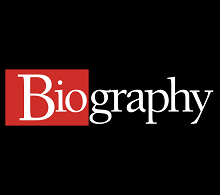What is Biography
A biography or a bio is a precise portrayal of a subject's life. A biography includes the details of the subject like education, work, childhood, relationships, and death. It records all the events or happenings of an individual's life. A biography is drafted in the structure of a tale. It follows a certain pattern/rhythm that plays a crucial role in deciding whether the biography is good or not. Biographies are written on a living person, or a dead person, or a historical person. It covers the facts of the person's life, from the time he was born till his death (or till the present day if the person is alive). Writing a biography is not a piece of cake. It requires thorough research about the person we intend to write on. If the person we want to write about is alive one can schedule an interview with them, and seek their permission to gather their details. If it is someone who was dead, not long ago one can arrange a meeting with their relatives, friends, or grandkids. If the person you want to write about is a historical person, one can use various resources like libraries and also contact those people who might have done research on the subject. A good biography portrays the life of the individual as though we know the subject very closely. Each detail of the subject's life is described in a unique way, thus making the biography a good one. Biographies tend to give us life lessons and an insight into what the person did, why they did, how they felt and their intention, and so on. History of BiographyThe earliest of biographies were found to be in the roots of Ancient Rome and Greece. The Roman writer Cornelius Nepos published the first-ever biography named "Excellentium Imperatorum Vitae" which translates as "Lives of outstanding generals" in 44BC. The Greek writer Plutarch published a biography titled "Parallel Lives" that consisted of 48 biographies of prominent men. This piece is known to be written around 80 A.D. During the middle ages, a decline of classical culture was noticed while simultaneously the Roman Catholic Church was seen having a prominent effect on the biographies. Since then a decline of biographies on history, politics, and culture was seen. The biographies were generally about the church fathers, martyrs, popes, and saints. In 1550, Italian painter/architect Giorgio Vasari wrote a biography named The Lives of the Most Excellent Painters, Sculptors, and Architects also famously known as "The lives". It instantly became the best seller of that time. The earliest contemporary biography was recorded in the 18th century, a product that made a significant impact on the progression of the genre. It was James Boswell's "The Life of Samuel Johnson". It was published in 1791. Some known biographical works are
Types of BiographiesAlthough all the biographies are similar in nature and they depict a person's life but there are different ways of presenting a biography some are listed below:
Biographers aspire to delight as well as inform, so they typically use a conventional plot structure-an entrance, dispute, rising of pressure, a climax, a commitment, and an ending-to give the life story a narrative shape. Biography's List
Next TopicAlbert Einstein
|
 For Videos Join Our Youtube Channel: Join Now
For Videos Join Our Youtube Channel: Join Now
Feedback
- Send your Feedback to [email protected]
Help Others, Please Share










